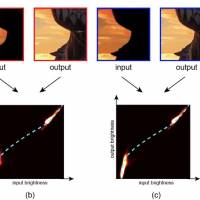Now that the Pixel 4a is out, we know that it basically has the same camera specs and features as the Pixel 4. This means updates on the Pixel 4 may also be applied to the Pixel 4a. Google boasts that the same great camera on Pixel 4 is now available at a lower price. One major camera feature is high dynamic range (HDR). This imaging method captures scenes with a range of brightness, resulting in high-quality images all the time.
Pixel phones utilize HDR+ burst photography. It’s a great feature but recently, it couldn’t compute in real-time. It results in the viewfinder not matching the final result.
Google continues to improve the viewfinder with the help of Live HDR+. This feature allows a real-time preview of the final image. This brings a more predictable quality. The company also introduced dual exposure controls. These are two controls that allow the user to adjust shadows and highlights separately.
HDR imaging is provided real-time creative control with the dual exposure controls and Live HDR+. The goal is WYSIWYG (What You See Is What You Get) and these two make it possible. What happens is the Pixel camera app captures 3 to 15 underexposed images.
The images are then aligned and merged to reduce noise. They produce a 14-bit intermediate “linear RGB image” as described. The result usually has pixel values proportional to the scene brightness of an image. You may notice the “tone mapping” of an image.
The Dual Exposure Controls allow highlights and shadows to be controlled separately. They are needed to achieve the correct overall brightness. You will see them as sliders on the Live HDR+ viewfinder. Some applications could be for details in bright skies. The Shadows slider is to improve the darker areas, especially in high-contrast scenes.












